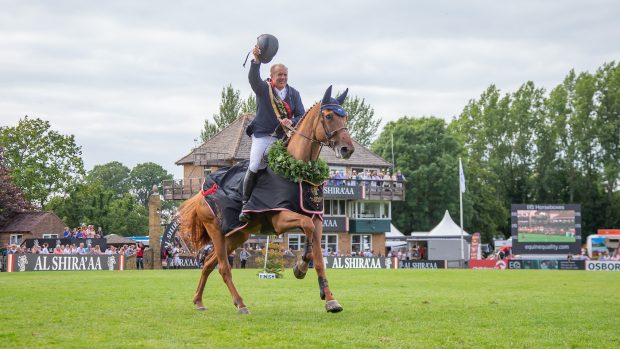For the best riders seeing a stride is instinctive, but for many of us it requires work. William Funnell shows us how, with the right training, every rider can be more accurate.
- Keeping an even rhythm and consistent pace will allow the horse to make his own adjustments in front of the fence.
- You have to teach a horse to canter forward, in balance, for himself. This leaves you free to feel the rhythm.
- You cannot hope to see a stride if the horse is not straight in front of the fence. When you are told to look early at a fence, it’s not to see a stride, it’s to make sure you are travelling on the correct line so, that when your eye clicks in, you are in the correct place to act.
- The only time you should really use your leg is on the take-off stride — the horse should be carrying you up until that point.
- In a jump-off round, you are not going to meet every fence perfectly — the horse has to learn to take care of himself and use his initiative. Just remember not to interfere with the balance.
- When it doesn’t all go to plan, try to let the horse use his head and neck to get out of trouble.
- It is always tempting to ride more strongly into combinations. But just because there is a second [and sometimes third] element involved, you shouldn’t change your approach.
- A dog-leg is a curving line so, to fit in the correct number of strides, the line you ride must keep to this curve. Turning too quickly after the first element will shorten the distance, while allowing the horse to drift out will make the distance longer.
- Sometimes it is necessary to be strong with your aids, especially if you feel the horse backing off. But the important thing in training is to keep repeating the exercise until you can sit still and the horse is confident enough to hold his rhythm to the fence.
- Don’t try too hard to look for a stride from a long way out. Theoretically, if you keep an even rhythm, you should meet every fence correctly.
To read further training advice from William Funnell, don’t miss Horse & Hound’s latest one-shot Horse & Hound Training.
Get more showjumping training tips



